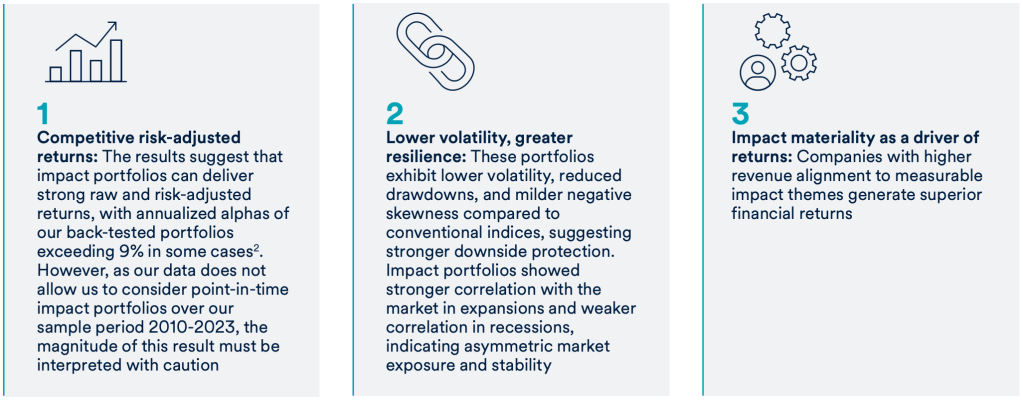Impact investments are not only viable but can drive alpha, finds new evidence that challenges the common assumption that impact investing requires sacrificing financial returns in favour of purpose.
While the impact investment market has expanded rapidly in recent years — at a 21% compound annual growth rate between 2019 and 2024 to reach US$1.57 trillion last year — there has been a significant research gap in understanding the financial performance of impact investing, leading to assumptions that a financial return trade-off is part and parcel.
Yet a study from Schroders and the University of Oxford, Impact and Financial Performance – Evidence from Listed Equities, finds that under the right conditions companies with measurable positive impact can deliver higher risk-adjusted returns, lower volatility, and resilience across market cycles.
Evaluating impact investing’s financial performance
The study by Schroders and the Rethinking Performance Initiative at Oxford University’s Saïd Business School drew on data from hundreds of firms seeking impact alongside competitive risk-adjusted financial returns and over a decade of performance.
The study leveraged both quantitative and qualitative methods, including regression analyses and case studies, to analyse 257 impact companies and evaluate how impact aligns with risk-adjusted financial returns.
Rather than finding that positive impact requires financial trade-offs, the study highlights how impact-driven businesses exhibit characteristics that contribute to their financial strength, such as higher operating margins, stronger workforce growth, and a reinvestment focus.
Key findings

Competitive returns: Impact portfolios delivered strong absolute and risk-adjusted returns, exhibiting statistically significant alpha that is unexplained by traditional risk factors.
Lower risk and enhanced stability: Impact portfolios exhibited lower volatility, smaller drawdowns, and reduced downside risk compared to the benchmark, indicating greater stability.
Resilience in market cycles: Impact portfolios showed strong performance during recessions, with defensive characteristics in sectors like healthcare and industrials. Their sensitivity to market risk is lower in recessions than in expansions, meaning they experience smaller declines in downturns while benefiting more from strong markets.
Impact materiality as a source of alpha: Companies with higher revenue alignment to impact generated superior financial returns, suggesting that impact itself can be a driver of financial performance.
These findings suggest that impact investing can deliver strong risk-adjusted financial returns, with impact itself acting as a driver of alpha in the right conditions.
An interesting secondary finding was that impact investments demonstrate a lower correlation coefficient in downturns. The report provides strong evidence that while not fully “recession-proof,” impact investments can provide more stable returns along with valuable portfolio diversification benefits.
Investment selection is key
Of course, not all impact investments will outperform with success dependent on thorough selection and evaluation. Financial strength and impact must reinforce — rather than compete with — each other, and when aligned can create meaningful long-term value.
For investors who get it right, impact is not only a purpose driven choice, but also a financially attractive investment opportunity.
The full research paper can be accessed here.
A summary report can be accessed here.
Join the OnImpact mailing list to receive the latest impact investment news and updates.

